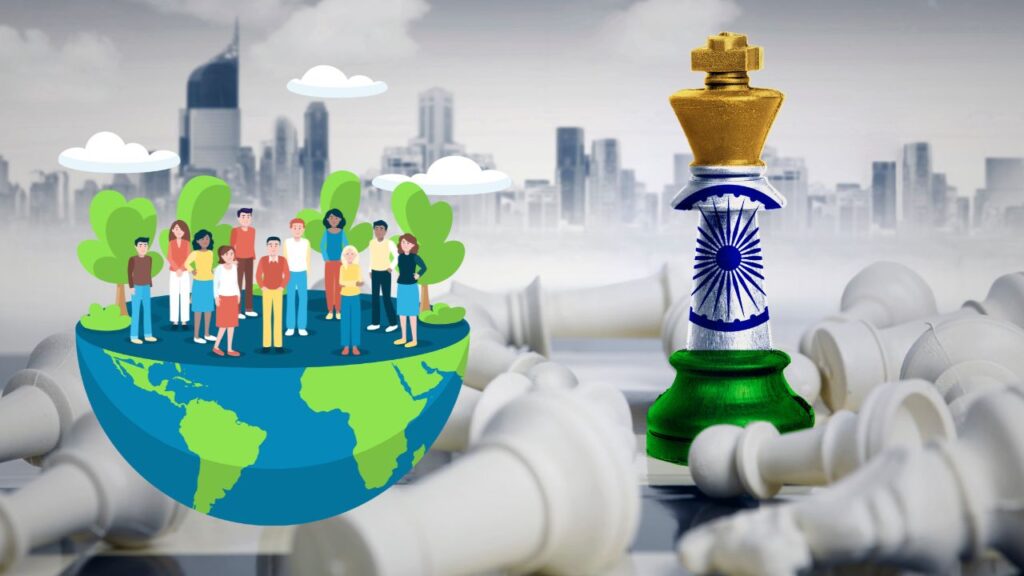India is predicted to surpass Japan and Germany by 2030 and become the third-largest economy in the world. S&P Global and Morgan Stanley made this projection. Businesses consider India’s trade to make it easier to trade goods and services. They also think about making it easier for people to get and use money by allowing financial freedom. They think about labor market reform, making it easier for people to find and keep jobs. They consider investing in infrastructure and human capital. This helps the country construct and enhance roads, bridges, and other important structures. It also aids in the development and education of its people.
The Driving Forces
India’s economy is growing fast because people want more, foreigners invest, and the middle class is growing. In the next ten years, e-commerce will grow faster because of the country’s digital changes. This will change the retail consumer market landscape.
Economists expect the economy to more than double to $7.3 trillion over this period, from $3.5 trillion in 2022. Morgan Stanley estimates that India’s GDP is likely to more than double from current levels by 2031.
The Role of Government Initiatives
The Indian government aims to bring in foreign investors and boost its manufacturing industry. To increase manufacturing and exports, they use the production-linked incentive scheme.
The Future Outlook
Because many people in the country want it, experts think the economy will keep growing fast in 2023 and 2024. The firm’s surveys show that the growth momentum is continuing. They use indicators like IIP and PMI.
By 2030, India’s economy will rank third. This is due to its large population, digital advancements, and expanding middle class. This will put it behind only the US and China, overtaking Germany and Japan.
Also Read: Amazon Q AI Chatbot Could be Experiencing a Mental Health Challenge
What are the challenges India faces in achieving this goal?
India faces challenges on its journey to becoming the world’s third-largest economy by 2030. Here are some of the key obstacles that the country needs to overcome:
Weak Demand: Demand in India for goods and services is weak due to several factors. These factors are low-income growth, high inflation, unemployment, and the COVID-19 pandemic.
Unemployment: High unemployment rates are a major issue, especially for young people and educated individuals.
Poor infrastructure: infrastructure development is crucial for economic growth. India faces challenges because it lacks enough infrastructure, such as roads, ports, and power.
Balance of Payments Deterioration: India has been dealing with a worsening balance of payments situation.
High Levels of Private Debt: High levels of private debt can be risky for economic stability.
Inequality: Economic inequality remains a significant issue, with a wide gap between the rich and the poor.
Unrealized Demographic Potential: India’s young people have a lot of potential, but they aren’t able to use it because they don’t have enough skills or opportunities.
Unrealized Ease-of-Business and Innovation Potential: India has not fully tapped into its potential for business and innovation, as it still ranks low in these areas.
India needs to overcome these challenges to reach its goal of becoming the world’s third-largest economy by 2030.
Also Read: Apple Skipping 5G to Focus on 6G Modem Development for Future iPhones
What is the current state of India’s economy?
As of 2023, the Indian economy is showing strong signs of recovery and growth. Here are some key points:
- Experts expect the economy to experience real-term growth of 7 percent for the year ending March 2031. This follows 8.7 percent growth in the previous financial year.
- Economists project that the GDP will grow between 6.0 percent and 6.8 percent for the fiscal year 2023–24.
- From January to November 2021, credit growth for MSMEs was very high, averaging over 30.5 percent.
- This year, the Indian economy grew because the Central Government spent more money.
- The Reserve Bank of India (RBI) projects headline inflation at 6.8 percent in FY231.
- In Q3 of FY23, the housing market had less inventory. It went from 42 months to 33 months.
- In the second quarter of FY23, private consumption accounted for 58.4% of GDP. This was the highest percentage among all second quarters since 2013–14.
- India’s GDP touched the $3.75 trillion mark in 2023.
- India is projecting a GDP of ₹272.41 lakh crore for the fiscal year 2022–23. This represents a growth of 16.1% from ₹234.71 lakh crore in 2021–22. This is approximately $3.30 trillion, up from $2.84 trillion.
The numbers show that the Indian economy is recovering well and looks positive.

